Forestville Mystery Cave
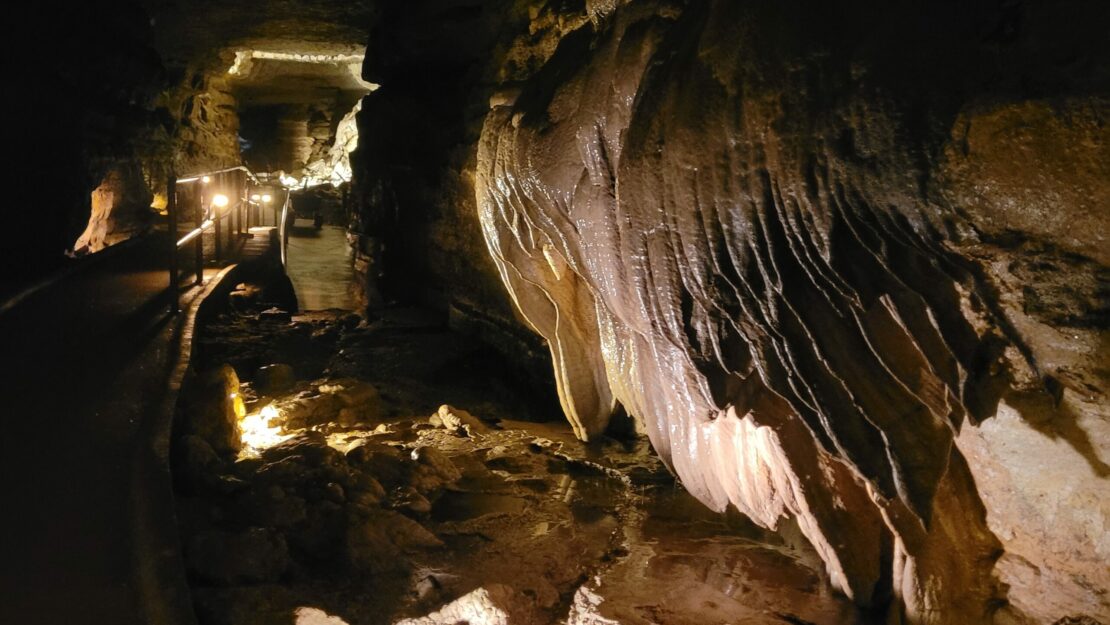
By Kendall Buckingham, Rochester Pines Field Crew Member / AmeriCorps Member
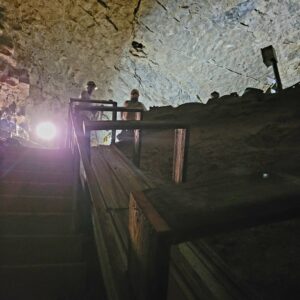 Caves are complex alien-like ecosystems with their own diverse life. Recently Rochester crews had the opportunity to assist in the restoration of Forestville’s Mystery Cave. Mystery Cave was first discovered in 1939 by a farmer named Joseph Petty who later opened it up to tours. The state acquired it in 1988, adding accessible walkways and lighting. Now it is a part of the 3,000-acre Forestville Mystery Cave State park. Mystery Cave is the longest cave system in Minnesota running over 13 miles. The cave consists of a beautiful mix of stalactites, stalagmites, flowstone, and pools. This complex underground cave acts as a drainage system that collects water from the south branch of the Root River and redirects it throughout its many passages. This means that the cave regularly floods, which washes out sediment and re-deposits it when the water finally drains. After one of these events, the sediment was removed and placed in an adjacent section of the cave. Recently, the Rochester crews had the ability to assist in the process of removing the sediment to restore that section of mystery cave. This long arduous process is still ongoing and will continue in the fall.
Caves are complex alien-like ecosystems with their own diverse life. Recently Rochester crews had the opportunity to assist in the restoration of Forestville’s Mystery Cave. Mystery Cave was first discovered in 1939 by a farmer named Joseph Petty who later opened it up to tours. The state acquired it in 1988, adding accessible walkways and lighting. Now it is a part of the 3,000-acre Forestville Mystery Cave State park. Mystery Cave is the longest cave system in Minnesota running over 13 miles. The cave consists of a beautiful mix of stalactites, stalagmites, flowstone, and pools. This complex underground cave acts as a drainage system that collects water from the south branch of the Root River and redirects it throughout its many passages. This means that the cave regularly floods, which washes out sediment and re-deposits it when the water finally drains. After one of these events, the sediment was removed and placed in an adjacent section of the cave. Recently, the Rochester crews had the ability to assist in the process of removing the sediment to restore that section of mystery cave. This long arduous process is still ongoing and will continue in the fall.
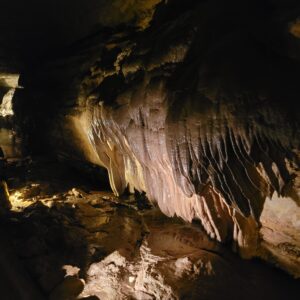 While working in the cave there were some precautions that needed to be taken in order to preserve the cave. We took extra special care to not touch the wall of the cave, as oil from your hands can disrupt the process of cave formations. Stalactites and stalagmites are the most common cave formations formed by minerals precipitating out of water onto an existing surface. Touching the walls alters the surface tension of the water and affects how it clings or flows. This affects the growth of cave formations. Only water was allowed into the cave to protect the microbial ecosystem. As any food or other beverages would leave nutrients in the cave that are not normally there. This can permanently damage the microbial ecosystem by throwing off the delicate balance of nutrients or by introducing entirely new organisms.
While working in the cave there were some precautions that needed to be taken in order to preserve the cave. We took extra special care to not touch the wall of the cave, as oil from your hands can disrupt the process of cave formations. Stalactites and stalagmites are the most common cave formations formed by minerals precipitating out of water onto an existing surface. Touching the walls alters the surface tension of the water and affects how it clings or flows. This affects the growth of cave formations. Only water was allowed into the cave to protect the microbial ecosystem. As any food or other beverages would leave nutrients in the cave that are not normally there. This can permanently damage the microbial ecosystem by throwing off the delicate balance of nutrients or by introducing entirely new organisms.
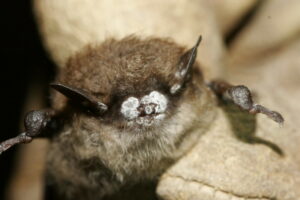
White nose syndrome (WNS) has also been detected at Mystery Cave. White nose syndrome is a cold loving fungus affecting bats as they hibernate. WNS affects the nose and wings of bats, hence the name white nose syndrome. The most critical damage is done to their wings which are essential for flight, heat exchange, water balance, and circulation. Bats infected with WNS wake up more frequently to warm temperatures, depleting their fat reserves. This leads to the bats starving before spring comes. This syndrome leads to high rates of death and has caused fast population declines. This syndrome commonly affects little brown bats, northern long eared bats, and tricolor bats, Which have declined more than 90%. Due to this steep decline the long-eared bats have been listed as endangered, and tricolored bats have been proposed for listing under the endangered species act. To slow the spread, it is important not to bring clothing from a WNS affected site to a WNS free zone. While it was difficult at times, Rochester crews made the best of it.
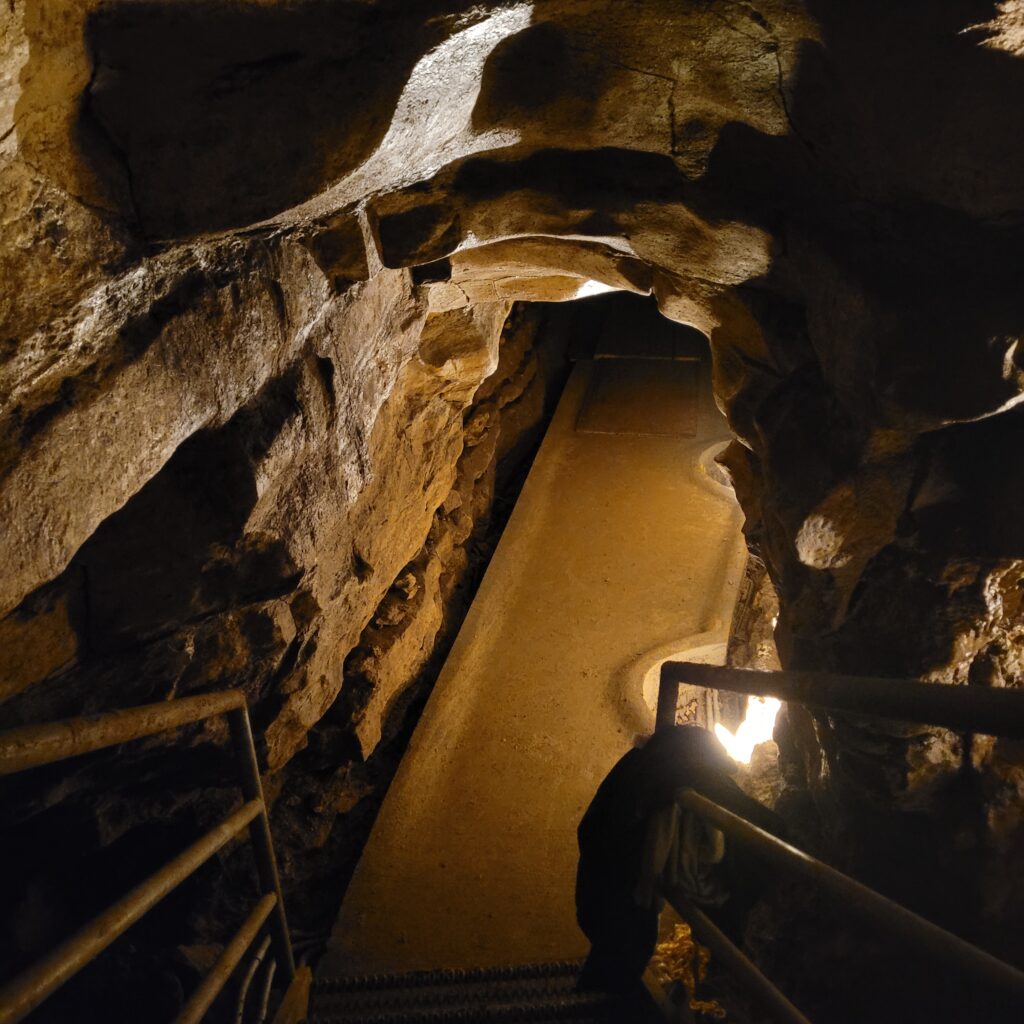
Further Reading:
Mystery Cave & Niagara Cave Tours: Minnesota from the Inside – Visit Minnesota
Forestville/Mystery Cave State Park | Minnesota DNR
pmc.ncbi.nlm.nih.gov/articles/PMC8877592